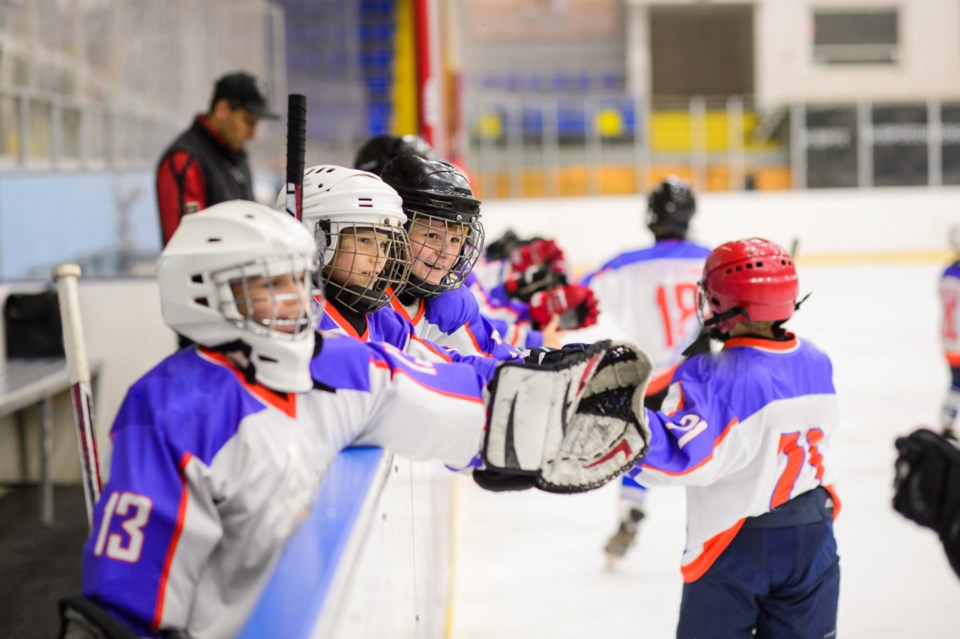Make no mistake: restarting British Columbia after The Great Isolation will be a mammoth task, and one complicated by COVID-19’s outright refusal to go away.
Every industry, every activity, every relationship will be affected both in the short-term by the need to do things to stave off the virus, and long-term by the economic and social repercussions of what we have done to flatten the curve.
To understand the depth of these changes, take a single industry or workplace and ponder for a moment what would have to change in order to make it COVID-19 resistant. It’s a lot.
I’ll give just one example: minor hockey. I sit on the executive of the second-largest minor hockey association in B.C. (Langley), which had its season cut short in March. We still have tens of thousands of dollars of jerseys and equipment in individuals’ hands, as we await the provincial health officer’s instructions on what comes next. All arenas are closed, and the hope of any kind of spring or summer hockey has all but faded away.
Still, B.C.’s curve has flattened, and Dr. Bonnie Henry offered these hopeful comments on Wednesday (kudos to Patrick Johnston of The Province for asking): “I need the people who are involved [in minor sports] thinking about how we can do it in the new normal,” said Henry. “We need to find ways to do it.”
However, her next ten words show just how much hockey will have to change in B.C. if it is to resume this fall: “We know it’s less risky outside than it is inside,” Henry said of kids’ sports.
That’s sobering news for minor hockey. But let’s pull that thread. What could happen to make minor hockey a socially distant sport?
I should note that the ideas that follow are NOT part of any discussion we’ve had in Langley Minor Hockey or in any organized hockey setting. These are just my thoughts as I brainstorm how minor hockey could look until a COVID-19 vaccine or cure is found.
The list of potential changes is staggering. First, think of what arena operators could need to tackle:
- Arenas with more than one sheet of ice will need to be reconfigured to allow separate entrances to each ice surface.
- Arena staff will need to greatly increase cleaning and disinfection.
- Hand sanitizer dispensers will need to be everywhere.
- Arenas will need to schedule longer gaps between ice rentals to give time for turnover and disinfection.
- Arenas will need to offer reliable video streaming for parents, grandparents and others.
- Arenas will need to mark off socially-distant viewing spots for what few people are allowed to watch.
- Dressing rooms will need to be reconfigured.
Those arena changes pale in comparison to what teams, players, coaches, officials, and families will have to deal with:
- No out-of-town tournaments.
- No barbecues, postgame team meals, tailgates or other social gatherings.
- Players will likely have to arrive for ice times 10-15 minutes early, fully geared-up, except for skates. This means no pregame dressing room chats and no pregame drill and warmups.
- After games, players will change from skates to shoes, and go home fully geared.
- More practices, far fewer games, and less ice time in general as arenas deal with the longer turnover times
- 1 or 2 coaches on the bench during games, likely masked.
- Perhaps a shift from 5 on 5 play, to 4 on 4. This would reduce roster size from 17 to 14. It may even be 3 on 3, and cut rosters to 10 or 11 players.
- Bodychecking will likely need to be further limited (it’s currently allowed at older levels).
- Spectators limited to team officials only. If 5 on 5 hockey sticks, add it up: 17 players per team, plus 5 team officials per team, plus 3 referees, plus 1 timekeeper/scoreboard operator and you’re already at 48 people (close to the 50-person maximum set out by the Province; could that be lifted for hockey, if you can get more people in, at a safe distance from each other?)
- Mandatory COVID-19 online training for all team coaches and officials, with extra training for the designated Hockey Canada Safety Person.
- Waivers holding associations harmless if someone contracts COVID-19.
- Parents testing kids’ temperatures before every game and practice, and holding them out if they have any symptom whatsoever.
- Limiting “call-ups”, so teams limit mixing.
- Strict water bottle protocols.
- Glass face-shields may become preferred to wire cages.
- Washing all jerseys, pant shells, socks and gloves after every outing; disinfecting helmets, sticks and skates after every outing; washing other equipment regularly.
These are radical changes and make minor hockey almost unrecognizable. The social element—for both players and parents—will be stripped out.
Given how different this could be, it will be important to remember something else Dr. Henry is fond of saying: “This is only for now. This is not forever.”
With so much of the Canadian identity wrapped up in minor hockey (and so much of a family’s activities tied to kids’ sports, arts and cultural activities), I hope she’s right.
Jordan Bateman has a long history of public policy work, championing small business and fiscal responsibility. Currently the Vice President, Communications & Marketing for the Independent Contractors and Business Association (ICBA), Jordan also served six years as the B.C. Director of the Canadian Taxpayers Federation, and was a two-term Langley Township Councillor.
SWIM ON:
- Previously, Jordan Bateman suggested the cruise industry might be an example for businesses looking to make customers feel safe in the post-COVID world.
- Bob Price on the end of a hockey era in Cranbrook.
- Sitting and working at home during the pandemic is challenging enough - now imagine doing it without broadband. As Dene Moore notes, that's the reality for much of rural BC.



